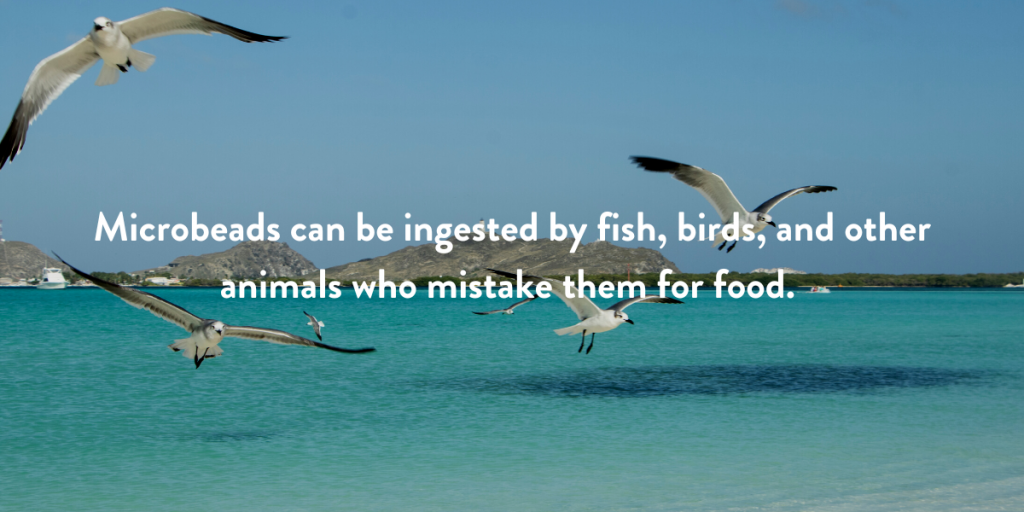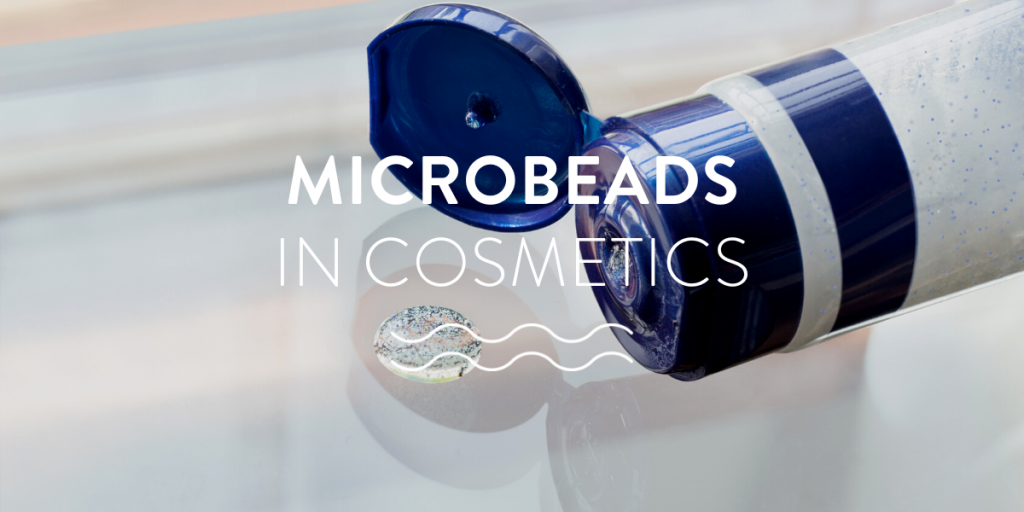When you go to the store to buy a face wash or toothpaste, you probably aren’t thinking about how much plastic is IN the product. But what if I told you that there were thousands of tiny pieces of plastic – microbeads – in many bottles? According to The Story Of Stuff, more than 10 million tons of plastic end up in our oceans every year. Much of this plastic comes from microbeads—tiny pieces of plastic less than five millimeters wide—which are added to personal care products such as face wash, toothpaste, and body scrubs.
These tiny grains are too small for wastewater treatment plants to remove before they get flushed down drains. Because of this, many countries have banned all microbeads from their products.
What exactly are microbeads?
To understand microbeads, envision them as tiny pieces of plastic that are so small they’re invisible to the naked eye. They’re found in a number of different personal care products like face wash, shampoo, and body wash—products we use every day without giving them much thought—but these plastics can cause serious problems for the environment. Microbeads are also used in many makeup products as well.
When you wash with a product containing microbeads (or if you put on lipstick or mascara), those little beads go down your drain and into local water systems where they may end up being eaten by fish and other marine life. This can lead to serious damage in ecosystems as well as health issues for humans who consume contaminated seafood products after eating them.
Microbeads are made from several different kinds of plastic.
- Plastic polyethylene: A hard, clear plastic used in many products including containers, packaging and construction materials.
- Plastic polypropylene: Another hard, clear plastic that is often melted and molded into other shapes. It appears as the most common type of microbead in cosmetics.
- Plastic polymethyl methacrylate (PMMA): Found only in some glitter-like eye shadows and mascara products; it’s a transparent but not completely see-through material with a milky appearance when applied to your skin or hair.
- Plastic polystyrene: A rigid solid used to make protective cases for electronic devices like mobile phones; this type of microplastic is sometimes found in hair care products such as shampoo or conditioner because the beads act as an abrasive agent to break up clumps in wet hair fibers—not unlike sandpaper!
How do they get into our waters and lakes?
Microbeads are accidentally washed down the drain by unknowing consumers. This means that all of us have contributed to the buildup of microplastics in our waters. These plastics can harm marine life like fish, worms, birds and corals. Since they’re not biodegradable (meaning they don’t break down over time), there’s no natural way for them to get rid of them once they get into your water supply!

How can you stop using products that contain microbeads?
- Check out BeatTheMicrobead.org. This website has TONS of information on how to avoid supporting brands that still use microbeads. They even have an area on their website that allows you to check the most popular products that might have plastic in them.
- Read labels. If you’re not sure whether a product contains microbeads, read the label carefully. It should say “polyethylene” or “polypropylene.”
- Buy products without microbeads. You can find many exfoliating scrubs made with natural ingredients, including oatmeal and coffee grounds—and they’ll also be better for your skin than products containing plastic particles! If you have trouble finding non-toxic scrubs at your local drugstore, try shopping online instead. You may have to pay more for shipping than you would at a store, but it’s worth it if it means supporting companies who are making an effort to phase out microbeads from all their products (and therefore protect our oceans).
- Try making your own beauty products!
Spread the word about what you’ve learned about microbeads! Tell friends and family about this important issue so that together we can make a real difference in protecting our oceans from plastic pollution. Many people are completely unaware of this topic.


